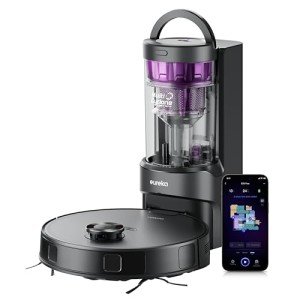Robotic Vacuum Cleaner Comparison: The Future of Home Cleaning
Over the last few years, robotic vacuum cleaners have actually changed the method we maintain cleanliness in our homes. With improvements in technology and the incorporation of synthetic intelligence, these gadgets have progressed from mere novelty items to vital household devices. This short article provides an extensive comparison of a few of the leading robotic vacuum cleaners on the market, assisting consumers make notified decisions when selecting a model that fits their requirements.
Understanding Robotic Vacuum Cleaners
Robotic vacuum cleaners are self-governing makers designed to tidy floors automatically. Equipped with sensing units, they navigate around challenges and change their cleaning routes for maximum performance. The essential features that separate different designs consist of suction power, battery life, app connectivity, navigation innovation, and price.
Key Features to Consider
When comparing robotic vacuum, potential buyers should take into account the following factors:
- Suction Power: Measured in Pascals (Pa), suction power figures out the efficiency of getting dirt and particles.
- Battery Life: The length of time a vacuum can operate before requiring a recharge substantially affects its cleaning performance.
- Navigation Technology: Models may utilize basic random navigation or innovative mapping technologies (like LIDAR) that permit them to develop a map of the home.
- Smart Features: Connectivity to smart device apps or smart home systems can enhance functionality and control.
- Filter Type: HEPA filters are suggested for allergic reaction patients, as they trap allergens and improve air quality.
Comparison of Top Robotic Vacuum Cleaners
Below is a comparison table of a few of the best robotic vacuum offered in 2023:
| Model | Suction Power (Pa) | Battery Life (minutes) | Navigation Technology | Smart Features | Price (GBP) |
|---|---|---|---|---|---|
| iRobot Roomba i7+ | 1700 | 75 | Smart mapping | App control, voice command | ₤ 949 |
| Roborock S7 | 2500 | 180 | LIDAR | App control, multi-floor | ₤ 649 |
| Neato D7 | 2000 | 120 | LIDAR | App control, zone cleaning | ₤ 599 |
| Ecovacs Deebot T10 | 3000 | 150 | Smart mapping | App control, space detection | ₤ 799 |
| Shark IQ Robot | 1200 | 90 | Random | App control, self-emptying | ₤ 399 |
Description of the Table
- iRobot Roomba i7+: Known for its robust cleaning capability, it features smart mapping technology that permits it to designate particular locations for cleaning. Its self-emptying function is a plus for benefit.
- Roborock S7: This model stands out in suction power and battery life, making it ideal for larger homes. Its LIDAR technology assists develop an effective cleaning course, and it can vacuum and mop all at once.
- Neato D7: The D-shape design permits better corner cleaning, and it features strong suction power. Its LIDAR navigation enables it to map out cleaning areas properly.
- Ecovacs Deebot T10: Boasting the highest suction power and advanced navigation, this design can manage several floorings effectively. It's a versatile option for households with varying floor types.
- Shark IQ Robot: A budget-friendly choice that still offers smart functions. Its self-emptying ability and app integration make it a useful choice for those trying to find a solid cleaning companion without breaking the bank.
Advantages of Robotic Vacuum Cleaners
Robotic vacuum cleaners offer numerous advantages that contribute to their increasing popularity among consumers:
- Time-Saving: Automated cleaning permits users to maximize important time that can be invested in other activities.
- Convenience: Many models can be scheduled via apps to clean at specific times, minimizing manual effort.
- Ease of access: They can reach under furnishings and in tight areas where traditional vacuums might struggle.
- Daily Maintenance: Regular usage of robotic vacuums can help maintain a consistently tidy environment, promoting better general home hygiene.
Frequently Asked Questions About Robotic Vacuum Cleaners
1. How often should the best robot vacuum cleaner run my robotic vacuum?
It is suggested to run the robotic vacuum at least 2-3 times a week to keep cleanliness, though daily use can be useful, especially in homes with family pets or high foot traffic.
2. Do robotic vacuums work on carpets?
Yes, many robotic vacuums are developed to deal with carpets, but effectiveness might vary based upon the design's suction power and brush type. Search for designs specifically mentioned as effective for carpets.
3. Can robotic vacuums clean animal hair?
Many robotic vacuums can effectively pick up pet hair, however those with strong suction and tangle-free brush styles are especially well-suited for this task.
4. How do I preserve my robotic vacuum?
Routine maintenance consists of cleaning the brushes and sensors, clearing the dustbin, and occasionally changing filters to ensure ideal performance.
5. Are robotic vacuums worth the financial investment?
While they tend to be more pricey than conventional vacuums, the benefit, efficiency, and time-saving elements make them a deserving financial investment for many families.
The market for robotic vacuum cleaners continues to expand as technology progresses, using consumers a variety of choices to suit different cleaning needs and budget plans. By thoroughly thinking about features such as suction power, battery life, and smart abilities, users can pick a design that aligns with their way of life. Whether for benefit, ease of usage, or remarkable cleaning performance, robotic vacuums are undoubtedly reshaping the future of home cleaning.

